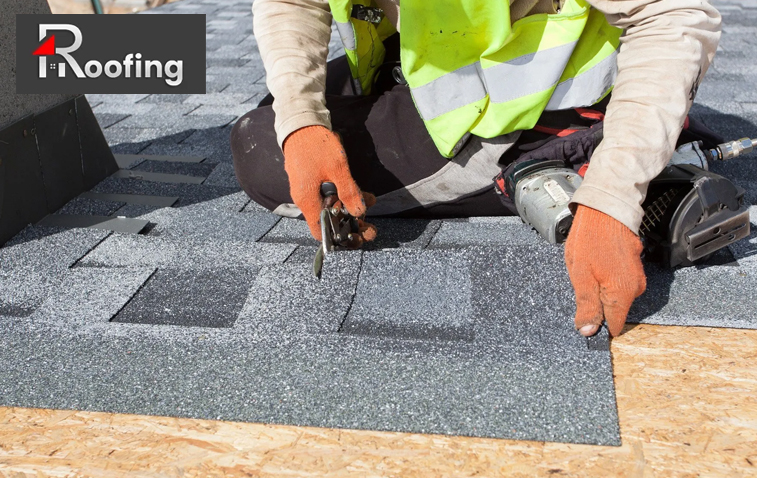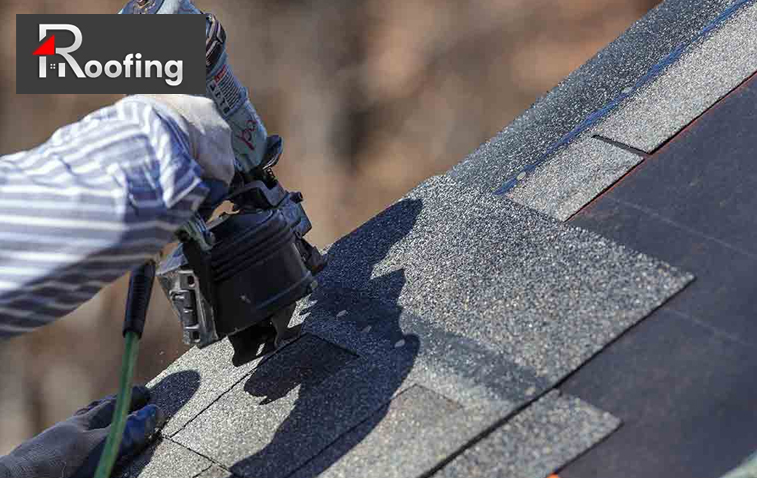A well-maintained roof is crucial for the overall health and longevity of your home. Asphalt shingles, known for their durability and affordability, are a popular choice for many homeowners. However, like any roofing material, asphalt shingles require proper care and maintenance to maximize their lifespan.
Ensuring that your roof remains in top condition not only protects your home from the elements but also helps you avoid costly repairs and replacements in the future. By following a few key maintenance practices for your asphalt shingle roof and being proactive about roof care, you can significantly extend the life of your asphalt shingles.

Maintaining your roof involves regular inspections, timely repairs, and preventive measures that address potential issues before they become major problems. Whether you’re dealing with extreme weather conditions, tree debris, or general wear and tear, taking steps to care for your asphalt shingles can make a substantial difference. Here are eight essential maintenance tips to help you extend the lifespan of your asphalt shingle roof, ensuring it remains durable and effective for years to come.
Regular roof inspections are the cornerstone of effective roof maintenance. By inspecting your roof periodically, you can identify and address minor issues before they escalate into significant problems.
Conducting roof inspections twice a year, typically in the spring and fall, allows you to catch seasonal changes that might affect your roof. Look for loose or damaged shingles, signs of wear, and any potential leaks. Addressing these issues promptly can prevent further damage and prolong the life of your roof. Additionally, seasonal inspections help you prepare for extreme weather conditions typical of each season.
After severe weather events such as storms, heavy rain, or hail, it’s crucial to inspect your roof for damage. High winds and hail can dislodge shingles or create cracks, leading to leaks and structural damage if left unaddressed. Even small amounts of damage can worsen over time, so it’s essential to check your roof immediately after severe weather and make necessary repairs.
Consider using technology, such as drones, to inspect hard-to-reach areas safely. Drones equipped with cameras can provide a close-up view of your roof, making it easier to spot potential issues without the need for ladders or scaffolding.
Clogged gutters and downspouts can cause water to back up and seep under your shingles, leading to water damage and roof deterioration.
Regularly clean your gutters and downspouts to ensure proper water drainage. Removing leaves, twigs, and other debris prevents clogs and allows rainwater to flow away from your roof and foundation. Clean gutters reduce the risk of water pooling and causing damage to your shingles. Aim to clean your gutters at least twice a year, and more often if you have trees near your home that shed leaves and debris.
Consider installing gutter guards to minimize the accumulation of debris in your gutters. Gutter guards help keep your gutters clear, reducing the frequency of cleaning and preventing blockages that can lead to roof damage. There are various types of gutter guards available, including mesh screens, foam inserts, and reverse curve systems. Choose a type that suits your needs and the specific conditions around your home.
Ensure that downspouts direct water away from your home’s foundation. Downspout extensions can help prevent water from pooling near the foundation and causing potential damage.

Overhanging tree branches can pose a significant threat to your roof. Branches can scratch and damage shingles, and fallen leaves can contribute to clogged gutters.
Maintain a safe distance between tree branches and your roof. Trim branches that hang over your roof to prevent them from coming into contact with your shingles. This proactive measure reduces the risk of damage from falling branches and leaves. A good rule of thumb is to keep branches at least 10 feet away from your roof.
Regularly prune trees near your home to keep branches from growing too close to your roof. This practice not only protects your roof but also enhances the overall health and appearance of your trees. Proper tree maintenance can prevent potential hazards and reduce the likelihood of branches breaking during storms.
For large or hard-to-reach branches, consider hiring professional tree services. Arborists can safely trim trees and ensure that your roof is protected without damaging the trees.
Moss and algae can accumulate on your roof, causing shingles to deteriorate and reducing their effectiveness.
Use a gentle cleaning solution specifically designed for roofs to remove moss and algae. Avoid using harsh chemicals or pressure washing, as these can damage your shingles. A mixture of water and mild detergent or a commercial roof cleaner can effectively eliminate moss and algae. Apply the cleaning solution with a soft brush or sprayer, and rinse thoroughly with water.
Consider installing zinc or copper strips along the ridge of your roof. When it rains, these metals release ions that inhibit the growth of moss and algae, keeping your roof clean and prolonging its lifespan. These strips are relatively easy to install and can provide long-lasting protection against moss and algae growth.
Keep your roof clean by regularly removing debris such as leaves and twigs. Ensuring proper sunlight exposure by trimming overhanging branches can also help prevent moss and algae growth.
Proper ventilation is essential for maintaining the health of your roof and preventing issues such as moisture buildup and overheating.
Ensure that your attic is properly ventilated to allow air to circulate and regulate temperature. Adequate ventilation prevents moisture from accumulating, which can lead to mold growth and shingle deterioration. Install vents at the eaves and ridge to promote airflow and keep your attic cool and dry. Proper ventilation also helps prevent ice dams in colder climates.
Achieve balanced ventilation by installing both intake and exhaust vents. Intake vents, located at the eaves or soffits, allow fresh air to enter, while exhaust vents, located at the ridge, allow warm, moist air to escape. This balanced system helps maintain a stable roof temperature and prevents moisture-related issues. Proper ventilation can also improve energy efficiency by reducing the load on your HVAC system.
Ensure that your attic insulation does not block ventilation pathways. Proper insulation and ventilation work together to maintain a healthy roof and energy-efficient home.
Even minor leaks can cause significant damage if not addressed promptly. Water infiltration can lead to mold growth, structural damage, and compromised roof integrity.
Regular inspections and prompt attention to leaks are crucial. If you notice water stains on your ceiling or walls, it’s important to locate and repair the source of the leak as soon as possible. Early detection and repair can prevent extensive damage and extend the life of your roof. Look for signs of leaks during and after heavy rain, and inspect areas around chimneys, vents, and skylights, which are common leak points.
For significant leaks or damage, consider hiring a professional roofer to assess and repair the issue. Professional repairs ensure that the problem is resolved correctly and that your roof remains in optimal condition. Experienced roofers can also identify underlying issues that may not be immediately visible.
While waiting for professional repairs, use temporary solutions such as tarps or roof patching materials to prevent further water infiltration. These measures can provide short-term protection until permanent repairs are made.
Proper insulation not only improves your home’s energy efficiency but also protects your roof by maintaining a consistent temperature.
Adequate attic insulation helps regulate the temperature in your attic, preventing heat from escaping in the winter and keeping your roof cooler in the summer. This temperature regulation reduces the risk of ice dams and shingle damage caused by extreme temperature fluctuations. Insulation also helps reduce energy bills by maintaining a stable indoor temperature.
Choose high-quality insulation materials that provide effective thermal resistance. Fiberglass batts, blown-in cellulose, and spray foam are popular options for attic insulation. Proper installation and coverage are essential to maximize the benefits of insulation. Ensure that insulation is evenly distributed and covers all areas, including corners and hard-to-reach spaces.
Follow recommended insulation levels for your climate zone. Adequate insulation levels vary depending on the region, so consult local building codes and guidelines to determine the appropriate amount of insulation for your attic.

In addition to regular inspections and DIY maintenance, scheduling professional roof maintenance can ensure that your asphalt shingles remain in top condition.
Schedule routine check-ups with a professional roofing contractor to assess the condition of your roof and perform necessary maintenance for your asphalt shingle roof. Professional roofers can identify potential issues that may not be visible during a standard inspection and provide expert solutions. Regular check-ups help maintain the integrity of your roof and prevent minor problems from becoming major issues.
Preventive maintenance, such as sealing cracks, replacing damaged shingles, and reinforcing flashing, can prevent minor issues from escalating into major problems. Professional maintenance extends the life of your asphalt shingle roof and provides peace of mind. A proactive approach to roof care can save you money and ensure that your roof continues to perform effectively.
Keep records of all professional maintenance and repairs. This documentation can be valuable for warranty claims and future reference, ensuring that your roof receives consistent and thorough care.
By following these eight essential asphalt shingle roof maintenance tips, you can significantly extend the lifespan of your asphalt shingle roof. Regular inspections, proper maintenance, and proactive measures can keep your roof in top condition, protecting your home and ensuring its longevity. A well-maintained roof not only enhances the overall health of your home but also provides peace of mind, knowing that your investment is well-protected.
You should inspect your asphalt shingle roof at least twice a year, in the spring and fall, and after severe weather events. Regular inspections help identify and address minor issues before they become major problems.
Yes, you can clean moss and algae from your roof using a gentle cleaning solution specifically designed for roofs. Avoid using harsh chemicals or pressure washing, as these can damage your shingles. Consider installing zinc or copper strips to prevent future growth.
Proper ventilation regulates the temperature in your attic, preventing moisture buildup and overheating. This helps maintain the integrity of your shingles and prevents issues such as mold growth and shingle deterioration, ultimately extending the life of your roof.
Attic insulation helps regulate the temperature in your attic, reducing the risk of ice dams and shingle damage caused by extreme temperature fluctuations. Proper insulation improves energy efficiency and protects your roof from temperature-related issues.

12 Roofing
12 Roofing brings together seasoned roofers and contractors to provide premier roofing solutions. Explore our comprehensive services and experience the exceptional quality and professionalism we offer.
Tile roofing is a classic choice for Burbank homeowners seeking […]
Have you ever imagined a roof that doesn’t just protect […]
Rain gutters plus are required in ensuring that water does […]
Speak with our in-house experts in residential roofing services for new ideas!
Copyright © 12 Roofing - 2025. All Rights Reserved.
